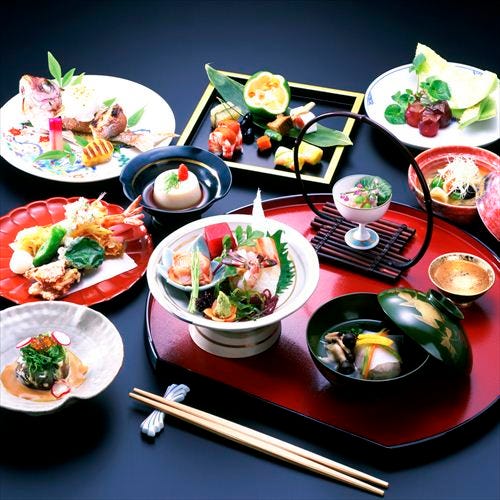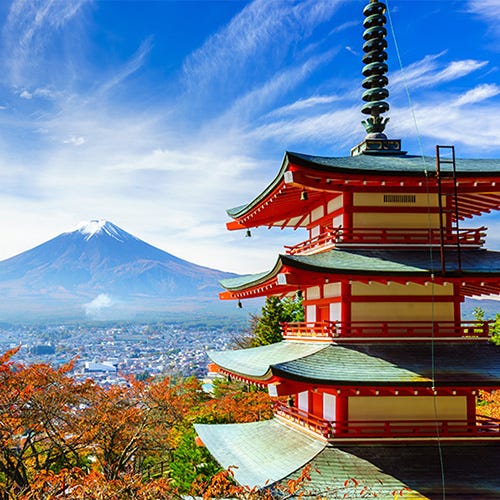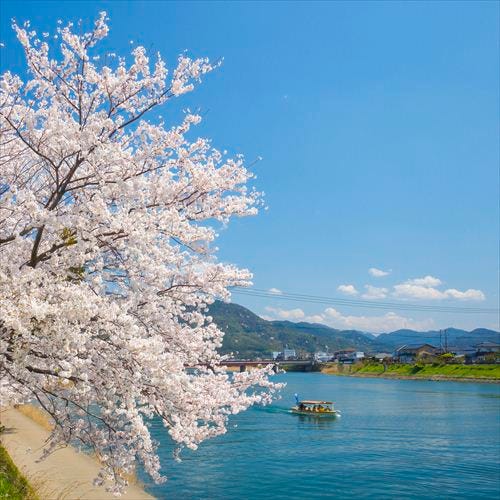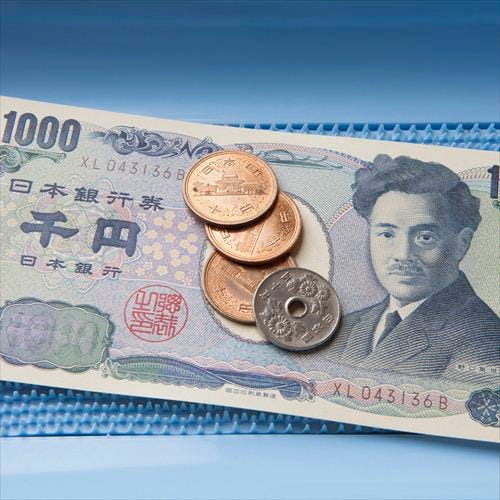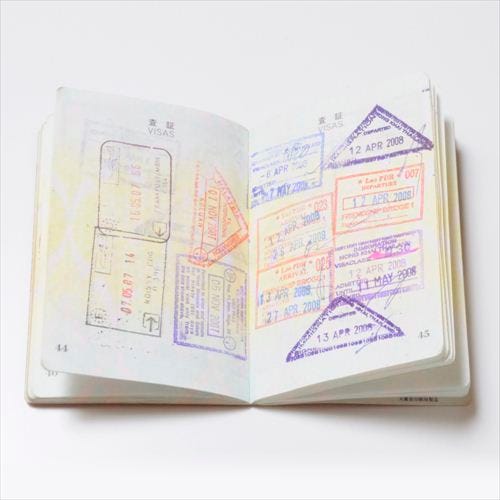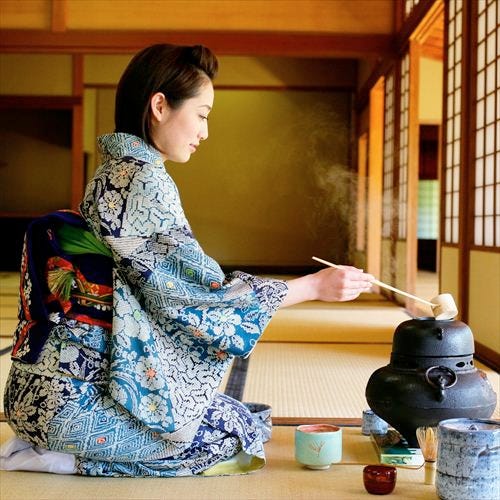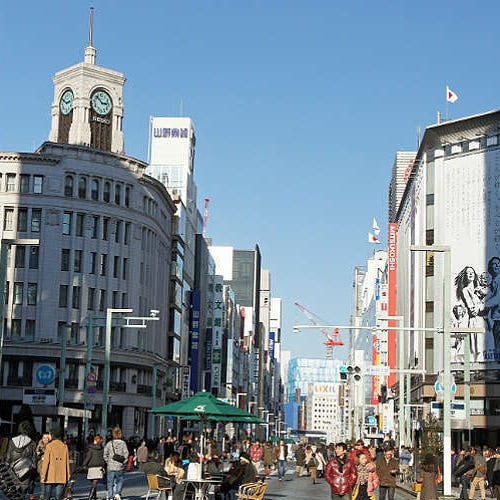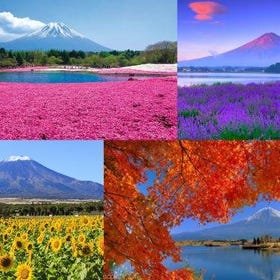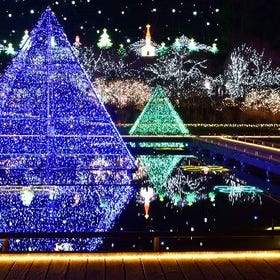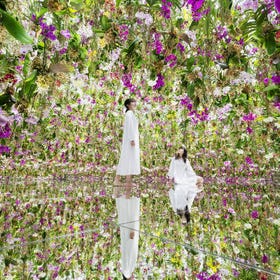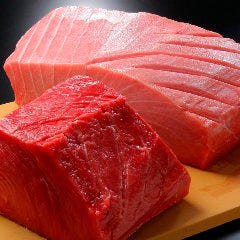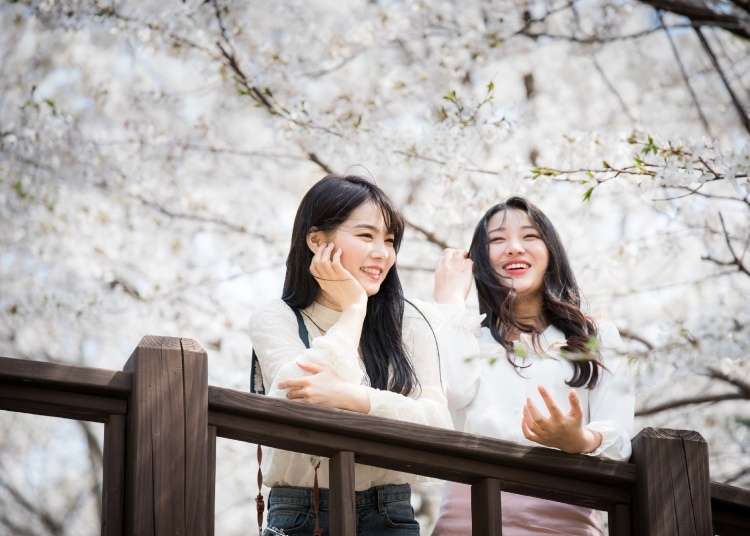
Getting to see the beautiful flowers in Japan is a wonderful experience, especially during spring and summer. If you are thinking of traveling to Japan, you may want to check out areas known for their Japanese gardens or even join a flower tour. These tours can include some of the most famous flowers in Japan, including the cherry blossoms.
So when and where can you see beautiful Japanese flowers? Follow along as we introduce what flowers bloom by month, where to find them, and even links to tours you can book.
Main image: PIXTA
Flowers of Japan: A special kind of culture
Flowers have a lot of meaning in this lovely country. Ikebana, or flower arranging, is one of the three classical Japanese arts of refinement. At the same time, rather surprisingly, Japan has a long history of tattooing, and Japanese flowers are a popular tattoo.
Meanwhile, there is no doubt that Japan is famous for sakura cherry blossoms, along with the whole concept of hanami (having a picnic and seeing cherry blossoms), so many tourists try to visit Japan to see them.
Clearly, there is something quite special and beautiful about Japanese flowers. It is perhaps an indicator of how deep flowering plants have penetrated the culture that visitors to Japan will want to visit a traditional Japanese garden, perhaps go to a flower park or festival, eat a sakura flavored KitKat or other sweet, and even sakura flavored sake.
Now that you know how important flowers are in Japan, you must be intrigued to know which flowers you can see in which season, but never fear, we have gathered all the information we could get to know exactly when which flowers are blooming!
Spring flowers in Japan
Whether you're a first-time visitor to Japan or a seasoned traveler, you'll want to visit during the spring flower season. In addition to cherry blossoms, there are many other attractive spring flowers to explore. From plum to wisteria, there are plenty of varieties to enjoy. You may also want to check out some of the popular flower festivals in Japan.
Ume (Plum)
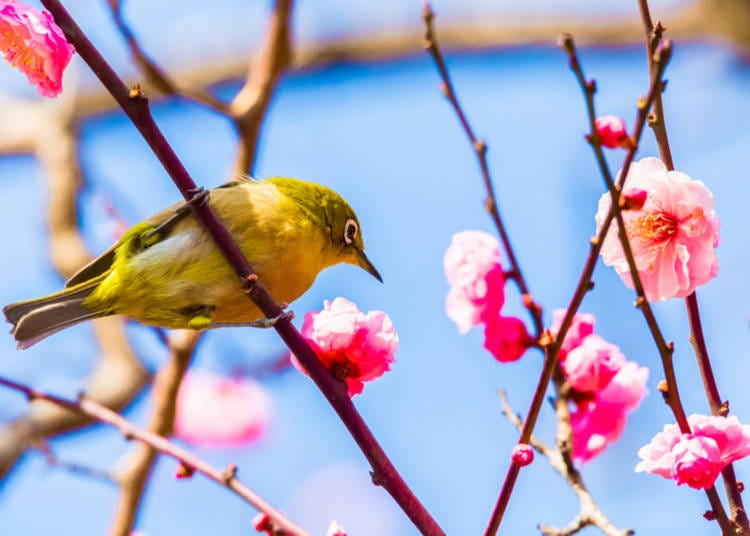
Plum season in Japan: Late February - Early March
The first blossoming flower of spring is not actually cherry blossoms, but ume (plum) blossoms! So when Japanese plum trees start to flower, it is a large announcement that spring has arrived, and in many areas of Japan, there are ume festivals where local people admire the flowers.
Normally occurring in February and March, a couple of locations for seeing ume blossoms is:
・Kairakuen (Ibaraki Prefecture - Mito Station, JR Joban Line)
・Yushima Tenjin Shrine (Tokyo – Yushima Station)
・Atami Plum Garden (Atami - JR Kinomiya Station)
-

-
Address
3-30-1, Yushima, Bunkyo-ku, Tokyo, 113-0034
View Map -
Nearest Station
Yushima Station (Tokyo Metro Chiyoda Line)
2 minutes on foot
- Phone Number 03-3836-0753
-
Address
3-30-1, Yushima, Bunkyo-ku, Tokyo, 113-0034
-

-
Address
8-11, Baiencho, Atami-shi, Shizuoka, 413-0032
View Map -
Nearest Station
Kinomiya Station (JR Ito Line / JR Ueno Tokyo Line)
10 minutes on foot
- Phone Number 0557-86-6218
-
Address
8-11, Baiencho, Atami-shi, Shizuoka, 413-0032
Sakura (Japanese Cherry)

Sakura season in Japan: Mid-Late March
Any list of Japanese flowers wouldn’t be complete without mentioning sakura cherry blossoms! This flowering tree has become so famous that the news reports on the blossom forecast across Japan, and people across the whole country find time to enjoy hanami.
There are beautiful locations everywhere, but two good spots include Shinjuku Gyoen and Yoyogi Park – however, hanami is very popular, so it will be busy!
-
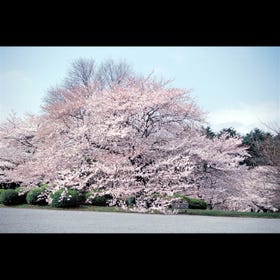
-
Address
11 Naito-cho, Shinjuku-ku, Tokyo, 160-0014
View Map -
Nearest Station
Shinjuku-Gyoemmae Station (Tokyo Metro Marunouchi Line)
5 minutes on foot
- Phone Number 03-3350-0151
-
Address
11 Naito-cho, Shinjuku-ku, Tokyo, 160-0014
-
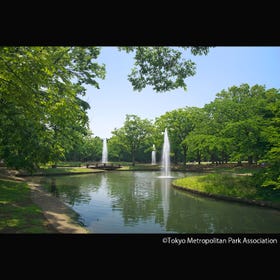
-
Address
2-1, Yoyogikamizonocho, Shibuya-ku, Tokyo, 151-0052
View Map -
Nearest Station
Harajuku Station (JR Yamanote Line)
3 minutes on foot
- Phone Number 03-3469-6081
-
Address
2-1, Yoyogikamizonocho, Shibuya-ku, Tokyo, 151-0052
Fuji (Wisteria)
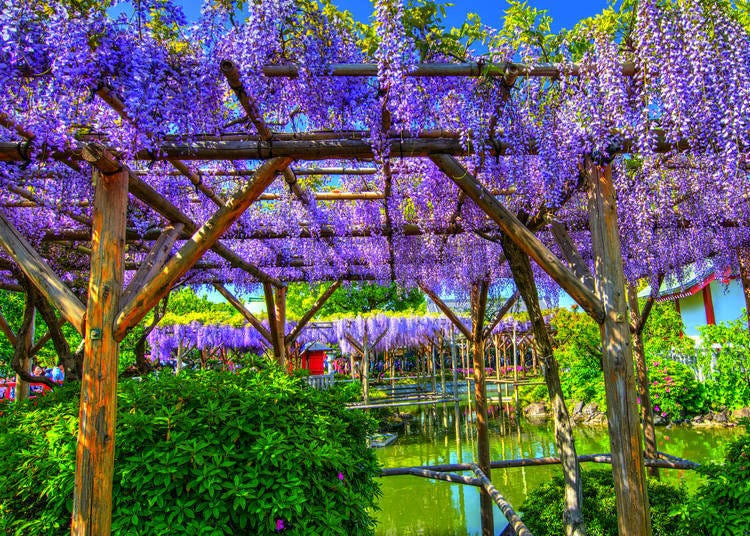
Wisteria season in Japan: Late April - Early May
Wisteria plants produce a tress of flowers up to 50cm long and with upwards of 100 flowers on just one tree. Usually a pale blue color, Japanese wisteria is enjoyed by gardeners around the world, and in Japan, you can find stunning displays of wisteria.
Ashikaga Flower Park in Tochigi Prefecture is perhaps one of the best displays and is around 90 minutes from Tokyo. Still, you can also see a smaller display at Kameido Tenjin Shrine near Kinshicho Station.
-
Ashikaga Flower Parkあしかがフラワーパーク
- Address 607 Hasama-cho, Ashikaga-shi, Tochigi 329-4216, Japan
-
Nearest Station
Tomita Station
- Phone Number 0284-91-4939
Hours: 10AM - 9PM
-

-
Address
3-6-1, Kameido, Koutou-ku, Tokyo, 136-0071
View Map -
Nearest Station
Kameido Station (Tobu Kameido Line / JR Sobu Line)
14 minutes on foot
- Phone Number 03-3681-0010
-
Address
3-6-1, Kameido, Koutou-ku, Tokyo, 136-0071
Churippu (Tulips)
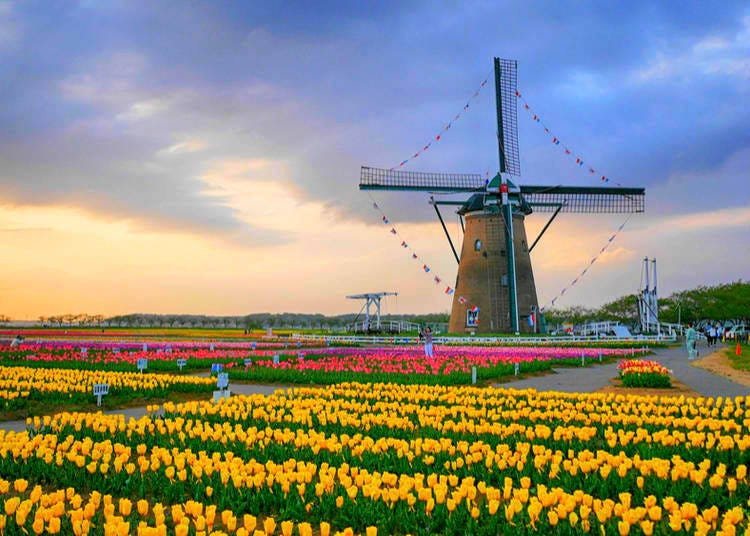
Tulip season in Japan: Late April - Early May
Beautiful tulip fields are normally associated with the Netherlands, but in Japan, too, you can see some exceptional tulip vistas. As a romantic flower, it is certainly one to take a date to see!
Tonami Tulip Park in Toyama Prefecture is perhaps the most famous place in Japan to see tulips as there are two million of them! However, as it is around 8 hours from Tokyo, if you want somewhere closer to Tokyo, get the JR TOKYO Wide Pass or the Greater Tokyo Pass and go to Sakura Furusato Hiroba in Chiba Prefecture.
-
Sakura Furusato Square佐倉ふるさと広場
- Address 2714, Usuita, Sakura-shi, Chiba 285-0861, Japan
- Phone Number 043-486-6000
Rapeseed (Nanohana)

Rapeseed season in Japan: Mid March - Early April
March is the best time for seeing rapeseed blossom, a flowering plant with a long history in Japan – it was mentioned as a food source over two thousand years ago. It is perhaps the oil from rapeseed that lit up Edo (Tokyo) not too long ago! It is normally in full bloom by the end of March.
Around Tokyo, Japanese flower lovers will tend to take the Kominato Railway/Isumi Railway line from Goi to Ohara in Chiba, which winds its way around the countryside - through gorgeous canola fields and past lines of scenic Japanese cherry blossoms.
A rather surprising place to see a yellow carpet of rape blossoms in Tokyo is near Shimbashi Station, in Hamarikyu Gardens, where tens of thousands of plants can be seen.
-

-
Address
Hamarikyuteien, Chuo-ku, Tokyo, 104-0046
View Map -
Nearest Station
Tsukijishijo Station (Toei Oedo Line)
5 minutes on foot
- Phone Number 03-3541-0200
-
Address
Hamarikyuteien, Chuo-ku, Tokyo, 104-0046
Shibazakura (Creeping Phlox)
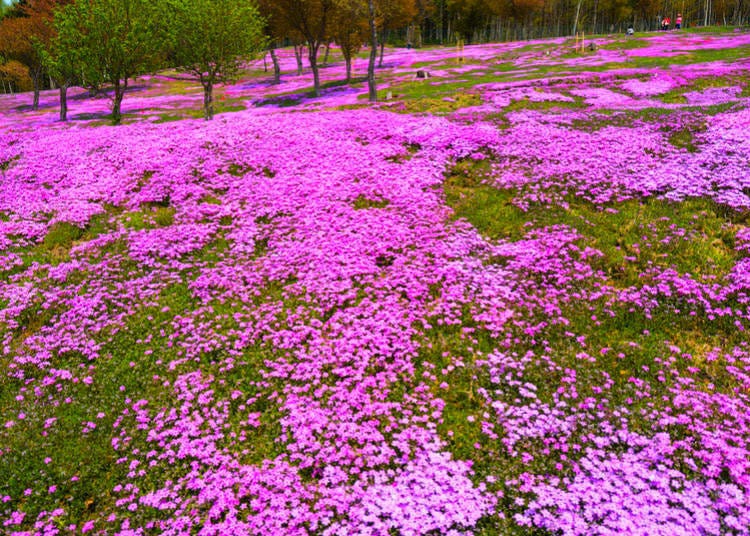
Season in Japan: April - May
Creeping Phlox blooms from April to May and provides a charming vista of pink! Native to America, this plant grows close to the ground and can be seen in
Hitsujiyama Park in Saitama Prefecture, or for a really iconic photo, try going to Fuji Shibazakura Festival where 800,000 creeping phlox plants bloom with Mt. Fuji in the background.
-
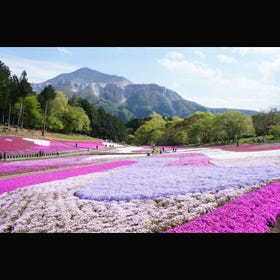
-
Address
6267, Omiya, Chichibu-shi, Saitama, 368-0023
View Map -
Nearest Station
Seibu-Chichibu Station (Seibu Chichibu Line)
15 minutes on foot
- Phone Number 0494-25-5209
-
Address
6267, Omiya, Chichibu-shi, Saitama, 368-0023
Nemofira (Nemophila)
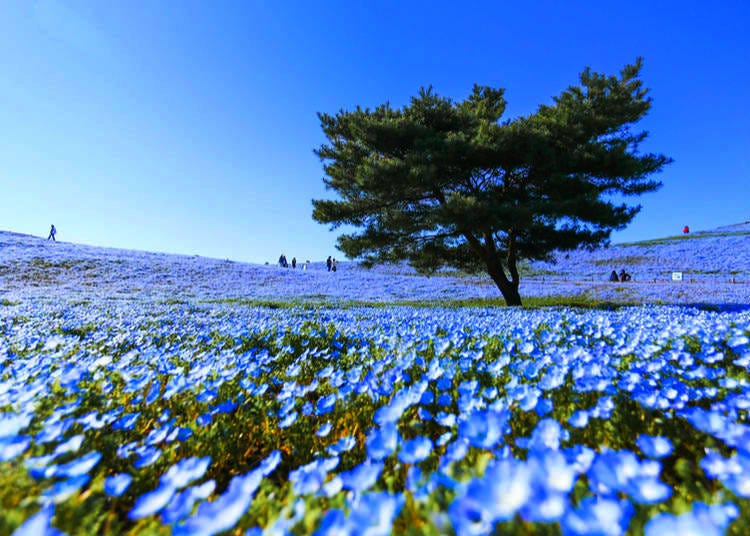
Nemophila season in Japan: Mid-April - early May
This is another low-growing plant that blooms from April to May, the color of which is associated with baby blue – which turns whole fields blue! These can be seen in Showa Memorial Park in Tokyo (Tachikawa Station), or for the awesome sight of over 4 million blooming nemophila flowers, check out Hitachi Seaside Park in Ibaraki Prefecture (2 hours from Ueno Station).
-
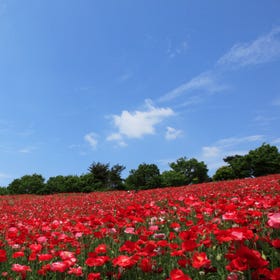
-
Address
3173, Midoricho, Tachikawa-shi, Tokyo, 190-0014
View Map -
Nearest Station
Nishi-Tachikawa Station (JR Ome Line)
2 minutes on foot
- Phone Number 042-528-1751
-
Address
3173, Midoricho, Tachikawa-shi, Tokyo, 190-0014
-
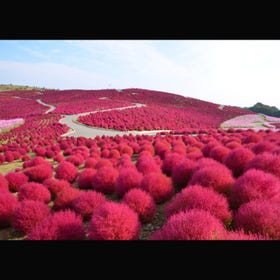
-
Address
605-4, Onuma, Mawatari, Hitachinaka-shi, Ibaraki, 312-0012
View Map -
Nearest Station
Katsuta Station (JR Joban Line / Hitachinaka Seaside Railway Minato Line)
-
Address
605-4, Onuma, Mawatari, Hitachinaka-shi, Ibaraki, 312-0012
Bara (Roses)
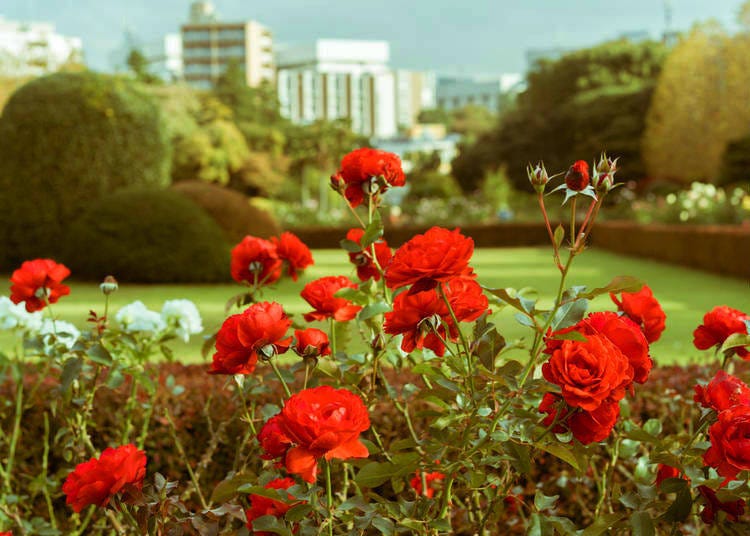
Rose season in Japan: Early-Mid May
The rose plant found itself in Japan fairly recently, it was introduced by Europeans, as such many rose bushes today are descended from European rose plants, and bloom through summer into autumn. They are fairly easy to find wherever you go, but check out the 500 different varieties of rose plants in Hibiya Park, Tokyo (Hibiya Station), or the French Garden in Shinjuku Gyoen National Garden.
Poppi (Poppies)
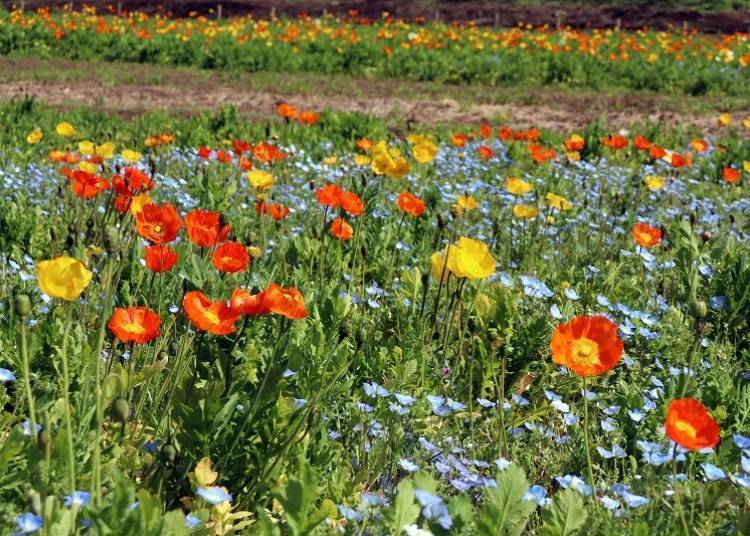
Poppy season in Japan: April - Late May
Summer flowers in Japan
During the summer season, Japan is full of flowers that make a great addition to any itinerary. The country has a rich tradition of flower viewing. Some of the best flowers in Japan include hydrangea, sunflowers, azaleas, iris, and lavender.
Hanashobu (Japanese Iris)
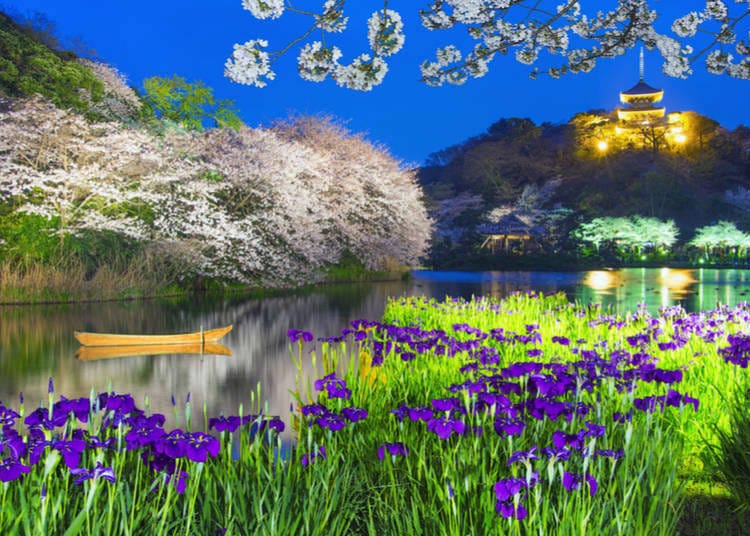
Iris season in Japan: May-July
The iris plant was introduced to Japan centuries ago, and since then this delicate flower has bloomed every summer to create a very charming vista. They can be seen from May to July, but in Tokyo, you can catch the Katsushika Shobu Matsuri, or Iris Festival, in Horikiri Shobuen (Horikirishobuen Station).
-

-
Address
2-19-1, Horikiri, Katsushika-ku, Tokyo, 124-0006
View Map -
Nearest Station
Horikiri-Shobuen Station (Keisei Main Line)
10 minutes on foot
- Phone Number 03-3697-5237
-
Address
2-19-1, Horikiri, Katsushika-ku, Tokyo, 124-0006
Hasu (Lotus)
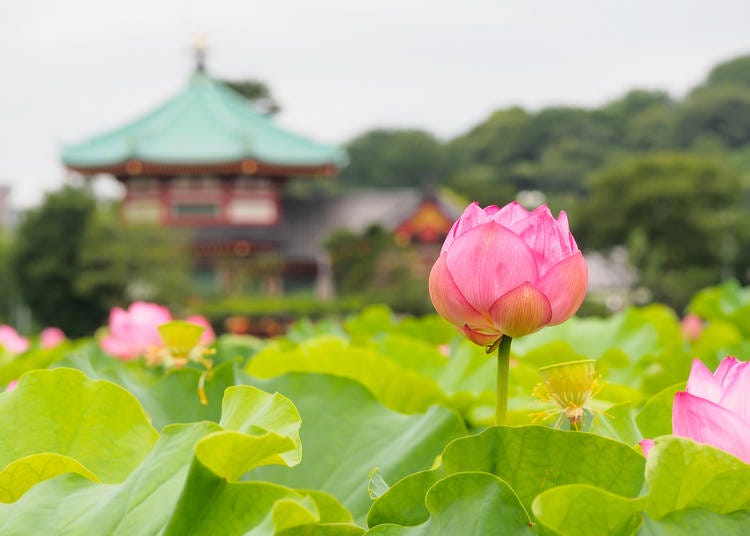
Lotus season in Japan: Mid-July - Mid-August
Lotus is an exceptionally gorgeous and fragrant flower, with petals of pink, red or white. A symbol of enlightenment, the lotus can be found in summer at many ponds near temples and shrines. Some famous places for lotus include Ueno Park in Tokyo (Shinobazu Pond), where they are particularly plentiful; in Kamakura, Tsurugaoka Hachimangu Shrine is quite popular for the flower; while in Yokohama, Sankei-en Garden has a lovely lotus patch.
-

-
Address
Uenokouen, Taitou-ku, Tokyo, 110-0007
View Map -
Nearest Station
Keisei Ueno Station (Keisei Main Line / Narita SKY ACCESS Line)
2 minutes on foot
- Phone Number 03-3828-5644
-
Address
Uenokouen, Taitou-ku, Tokyo, 110-0007
-

-
Address
2-1-31, Yukinoshita, Kamakura-shi, Kanagawa, 248-8588
View Map -
Nearest Station
Kamakura Station (JR Yokosuka Line / JR Shonan Shinjuku Line / Enoshima Electric Railway Line)
10 minutes on foot
- Phone Number 0467-22-0315
-
Address
2-1-31, Yukinoshita, Kamakura-shi, Kanagawa, 248-8588
-
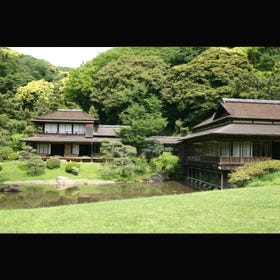
-
Address
58-1, Honmokusannotani, Naka-ku, Yokohama-shi, Kanagawa, 231-0824
View Map -
Nearest Station
Negishi Station (JR Negishi Line)
10 minutes by bus
- Phone Number 045-621-0634
-
Address
58-1, Honmokusannotani, Naka-ku, Yokohama-shi, Kanagawa, 231-0824
Himawari (Sunflowers)
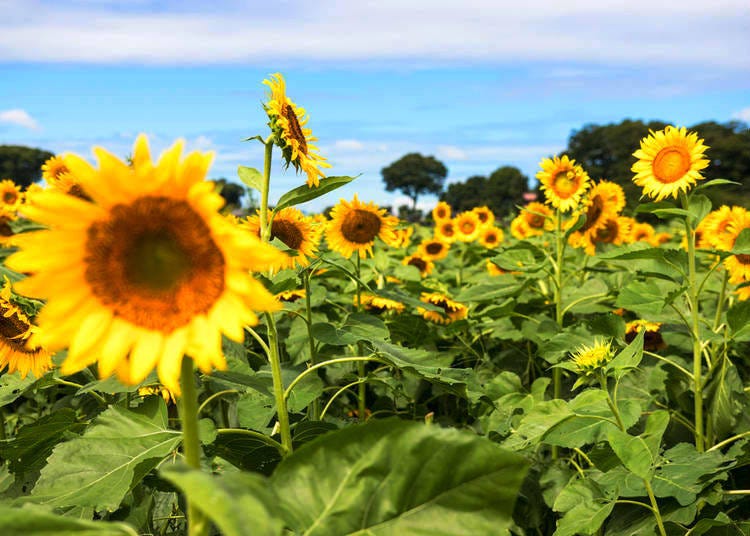
Sunflower season in Japan: July-August
From July to August, the world-famous sunflower blooms. These tall plants with large yellow flowers are so popular that sunflower festivals are held. But who can blame people – a field of sunflowers is really pretty! Some recommended locations include Akeno Himawari Batake (Akeno Sunflower Field) in Yamanashi Prefecture, Kiyose Sunflower Festival in Tokyo (Kiyose Station), and Sakura Furusato Hiroba in Chiba Prefecture.
Ajisai (Hydrangea)
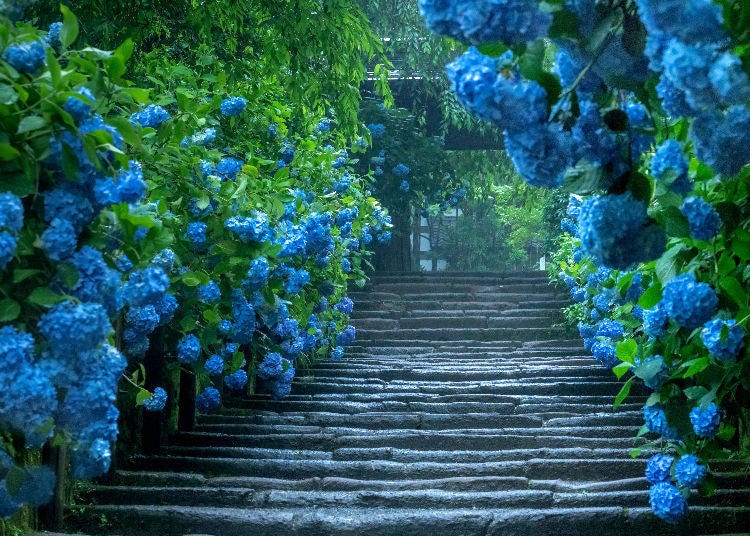
Hydrangea season in Japan: Mid June - Mid July
This plant is associated with the rainy season in Japan, so if you see it, then it might be raining or about to rain. The best time to see them is from mid-June to mid-July, there are many varieties of this plant native to Japan, but one, in particular, is noteworthy as its leaves are brewed to make a sweet tea (Hydrangea serrata).
Hydrangea festivals are normally held during June and July, while Hakusan Jinja Shrine or Asukayama Park in Tokyo are good places to see a lovely display of hydrangeas. Alternatively, head down to Hase Temple in Kamakura to catch a beautiful display of over 30 types of hydrangea.
-

-
Address
1, Oji, Kita-ku, Tokyo, 114-0002
View Map -
Nearest Station
Oji Station (JR Keihin-Tohoku Line / Tokyo Metro Namboku Line)
1 minute on foot
- Phone Number 03-3908-9275
-
Address
1, Oji, Kita-ku, Tokyo, 114-0002
-

-
Address
5-31-26, Hakusan, Bunkyo-ku, Tokyo, 112-0001
View Map -
Nearest Station
Hakusan Station (Toei Mita Line)
-
Address
5-31-26, Hakusan, Bunkyo-ku, Tokyo, 112-0001
-

-
Address
3-11-2, Hase, Kamakura-shi, Kanagawa, 248-0016
View Map -
Nearest Station
Hase Station (Enoshima Electric Railway Line)
5 minutes on foot
- Phone Number 0467-22-6300
-
Address
3-11-2, Hase, Kamakura-shi, Kanagawa, 248-0016
Rabenda (Lavender)
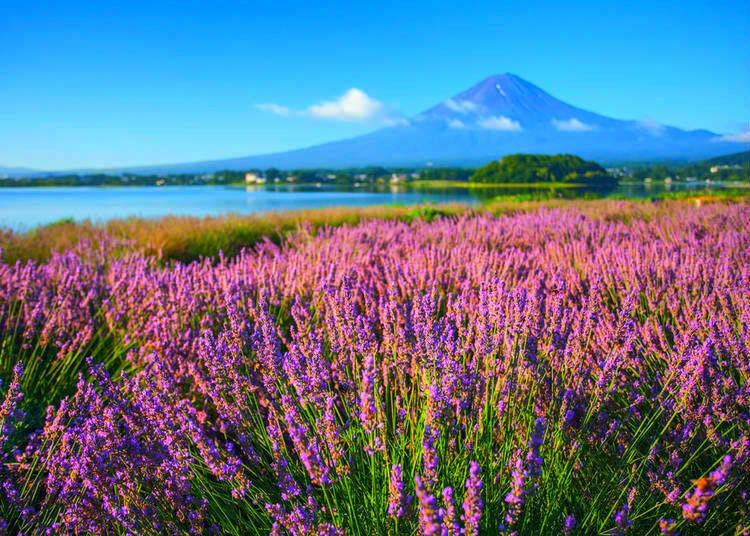
Lavender season in Japan: Early July - Early August
Lavender fields are simply gorgeous in Japan, and are famous for rivaling France in beautiful and scale. They bloom from early July to early August, and are particularly famous in Hokkaido where you can see vast lavender fields, such as Farm Tomita in Furano. Closer to Tokyo, you can find lavender fields in Tambara Lavender Park, Gunma Prefecture and Lake Kawaguchiko, Yamanashi Prefecture.
Daria (Dahlias)
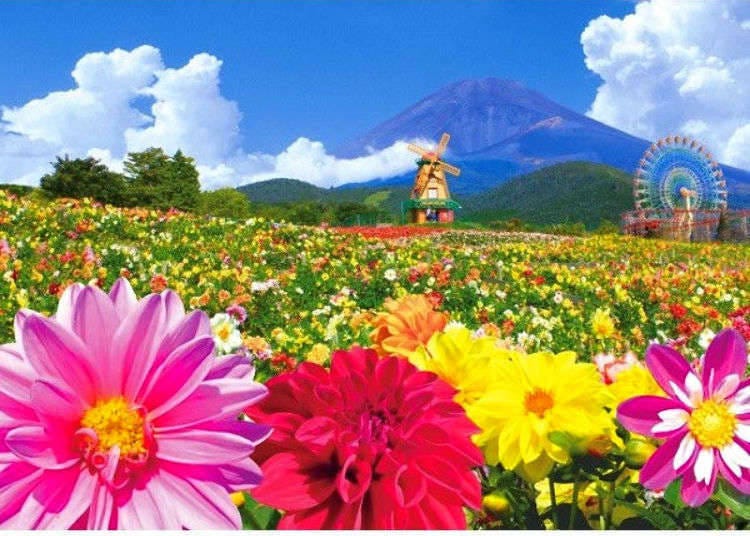
Dahlia season in Japan: Mid-July - Early October
Autumn flowers in Japan
During the months of September and October, the leaves of trees change color in Japan and fall bouquets of flowers appear. Fields of cosmos and spider lilies bloom, and you can enjoy chrysanthemum festivals at many larger temples around Japan.
Kosumosu (Cosmos)
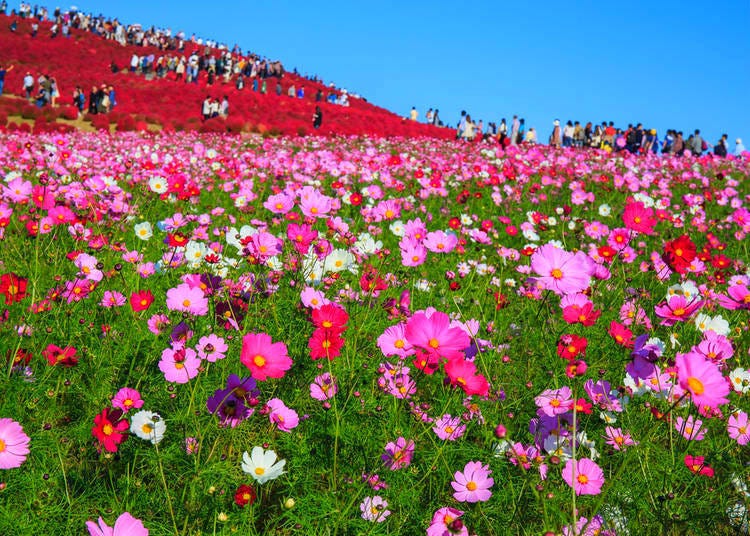
Cosmos season in Japan: Late August - Early October
Just as we can think of plum and cherry blossoms heralding the start of spring, so do the multicolored cosmos flowers indicate the start of autumn. They appear across Japan as they are relatively easy to grow and come in different colors; one field may appear like gold while another pink. You are also spoilt for choice in seeing these, cosmos flowers can be seen near Mt. Fuji at Hana no Miyako Koen (Lake Yamanaka), Sakura Furusato Hiroba in Chiba Prefecture, and Showa Memorial Park in Tokyo (Tachikawa Station). They may be seen at Kurihama Flower World (Kurihama Station) south of Tokyo.
-

-
Address
1, Shinmeicho, Yokosuka-shi, Kanagawa, 239-0832
View Map -
Nearest Station
Kurihama Station (JR Yokosuka Line)
15 minutes on foot
- Phone Number 046-833-8282
-
Address
1, Shinmeicho, Yokosuka-shi, Kanagawa, 239-0832
Manjushage (Spider lily)
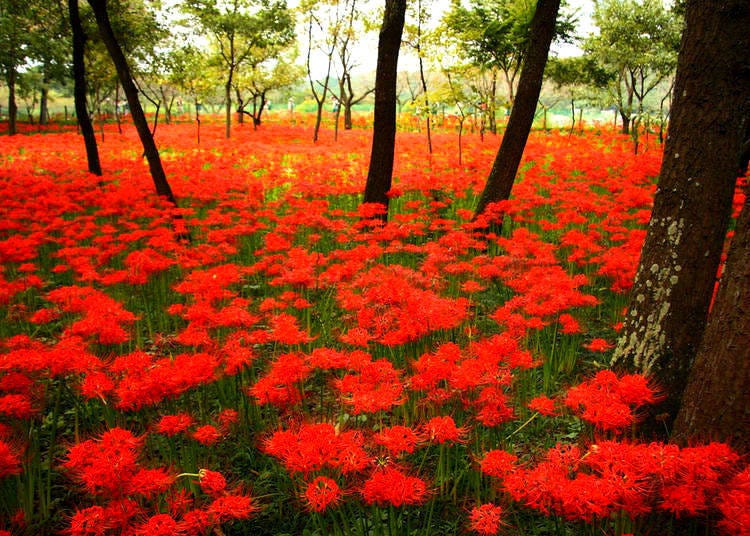
Spider lily season in Japan: Late September - Early October
As the name might indicate, this flower does look a bit like a big spider – but don’t worry it won’t bite. It is an unusual, but pretty flower, and it is a welcome sight to see in autumn. Just an hour away from Tokyo you can see over a million of them at the spider lily festival held in Kinchakuda Park, Saitama Prefecture (Koma Station).
Kiku (Chrysanthemum)
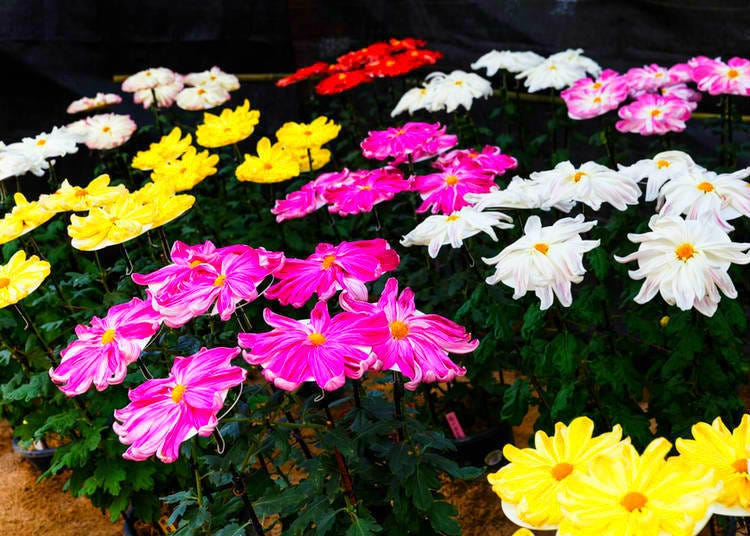
Chrysanthemum season in Japan: September - Mid November
The Chrysanthemum flower is beautiful, so beautiful that people love to get Japanese flower tattoos of this flower. This special flower is also the Imperial Family Emblem and is also frequently used for government or shrine seals. It is, in fact, on the front of the Japanese passport too! It normally starts blooming in September; one good location to see them is Shinjuku Gyoen Kikkadan-ten.
Koyo (Autumn foliage)
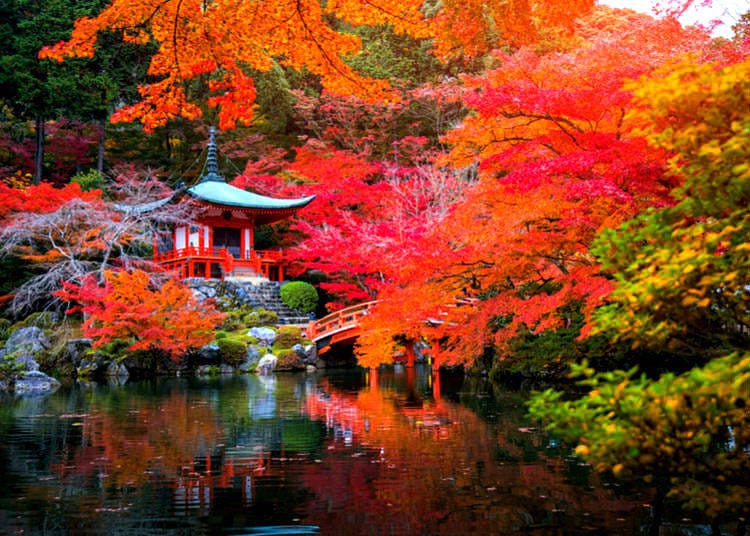
This isn’t a flower, but during the autumn visitors to Japan are given a real treat as the leaves turn different shades of red and yellow, it creates a really beautiful sight. They can be seen in cities and the countryside, basically anywhere there are trees!
Winter blooming flowers in Japan
During the winter months, Japan is home to a variety of flowers that blossom and bloom, adding color to the Japanese landscape.
Kan-Botan (Winter Peonies)

Peony season in Japan: Late November - Mid February
Winter is not really the time of year when we would even dream of seeing blooming flowers, but even in the depths of winter, you can be surprised by the sight of large colorful flowers. Winter peonies bloom from November to January, and in areas where snow is expected, they are often protected with straw covers. Check out Hamarikyu Gardens in Tokyo (Shimbashi Station) or Toshogu Shrine in Ueno Park (Ueno Station) to catch the surprising sight of beautiful flowers in winter!
-

-
Address
9-88, Uenokouen, Taitou-ku, Tokyo, 110-0007
View Map -
Nearest Station
Ueno Station (Hokkaido Shinkansen Line / Tohoku Shinkansen Line / Akita Shinkansen Line / Yamagata Shinkansen Line / Joetsu Shinkansen Line / Hokuriku Shinkansen Line / JR Keihin-Tohoku Line / JR Yamanote Line / JR Tohoku Main Line / JR Utsunomiya Line / JR Takasaki Line / JR Joban Line / JR Ueno Tokyo Line / Tokyo Metro Ginza Line / Tokyo Metro Hibiya Line)
5 minutes on foot
- Phone Number 03-3822-3455
-
Address
9-88, Uenokouen, Taitou-ku, Tokyo, 110-0007
Suisen (Japanese Daffodils)
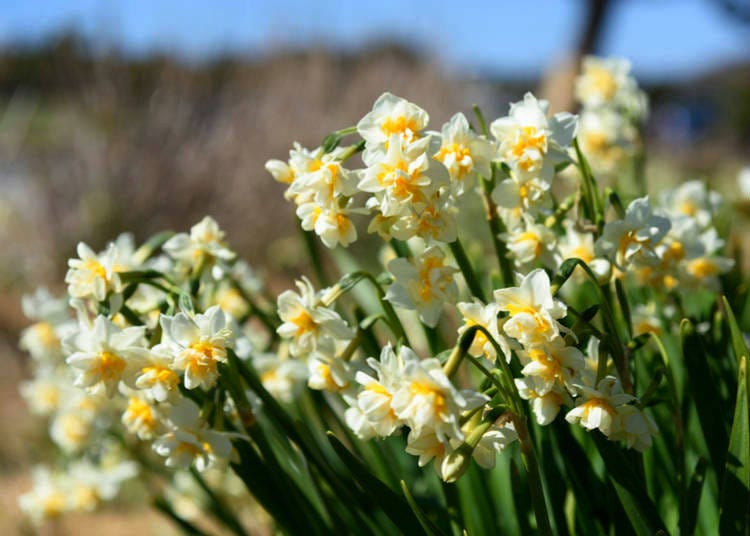
Daffodil season in Japan: December - January
From December to January, you might also catch a glimpse of flowering daffodil plants! In Jogashima Park, about an hour south of Tokyo, half a million of these plants bloom in the middle of winter.
-

-
Address
Misakimachijogashima, Miura-shi, Kanagawa, 238-0237
View Map -
Nearest Station
Misakiguchi Station (Keikyu Kurihama Line)
-
Address
Misakimachijogashima, Miura-shi, Kanagawa, 238-0237
Love Japanese flowers? Book a flower tour or experience!
- Category
*Prices and options mentioned are subject to change.
*Unless stated otherwise, all prices include tax.
Limited time offer: 10% discount coupons available now!
Recommended places for you
-

Things to do in Osaka, Kyoto, and Kobe in August 2023: Discover the Best of Kansai This Summer
-
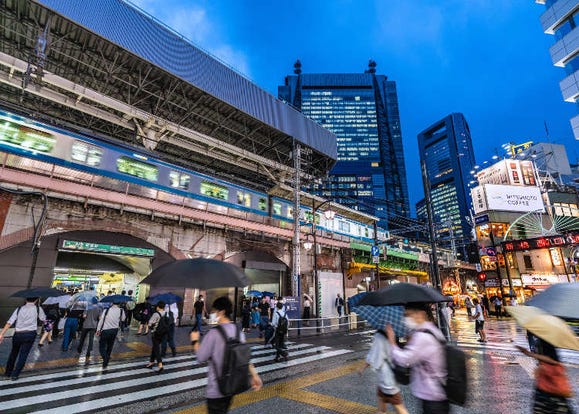
Typhoon Weather Information: In-depth Guide to Precautions, Preparation, and Planning Alternative Activities When Visiting Japan
-

Pop Culture Paradise: Find All Your Favorite Characters at Sunshine City in Ikebukuro
-
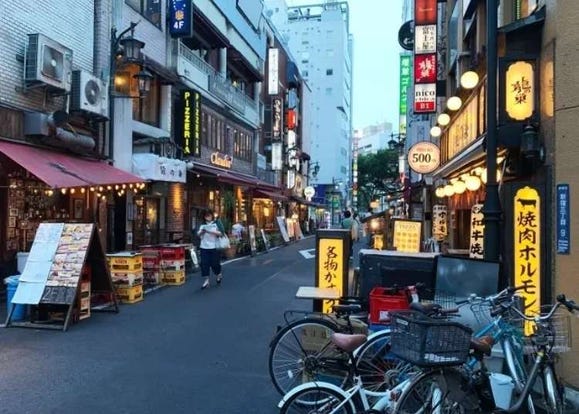
Japanese restaurant chain causes a stir with foreigners online, but is it any good?
-

Japanese countryside town makes giant corn maze full of oni for summer
-

10 Absolutely Adorable Animals in Hokkaido You May Encounter on a Lucky Day!
-
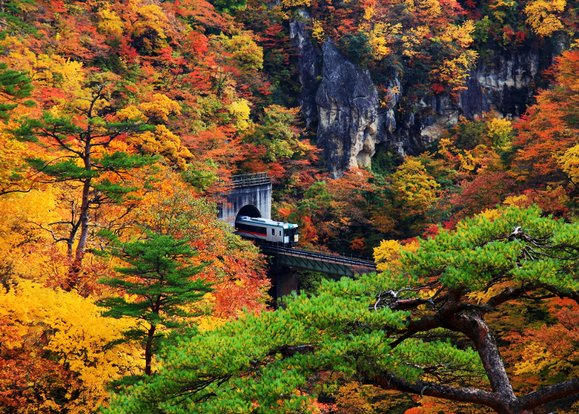
10 Best Spots to See Autumn Leaves in Tohoku: Naruko Gorge, Geibikei Gorge, and More!
-

Reflections on Kyoto from a British man. What Makes Kyoto Great from an Outside Perspective.
- #best sushi japan
- #what to do in odaiba
- #what to bring to japan
- #new years in tokyo
- #best ramen japan
- #what to buy in ameyoko
- #japanese nail trends
- #things to do japan
- #onsen tattoo friendly tokyo
- #daiso
- #best coffee japan
- #best japanese soft drinks
- #best yakiniku japan
- #japanese fashion culture
- #japanese convenience store snacks
